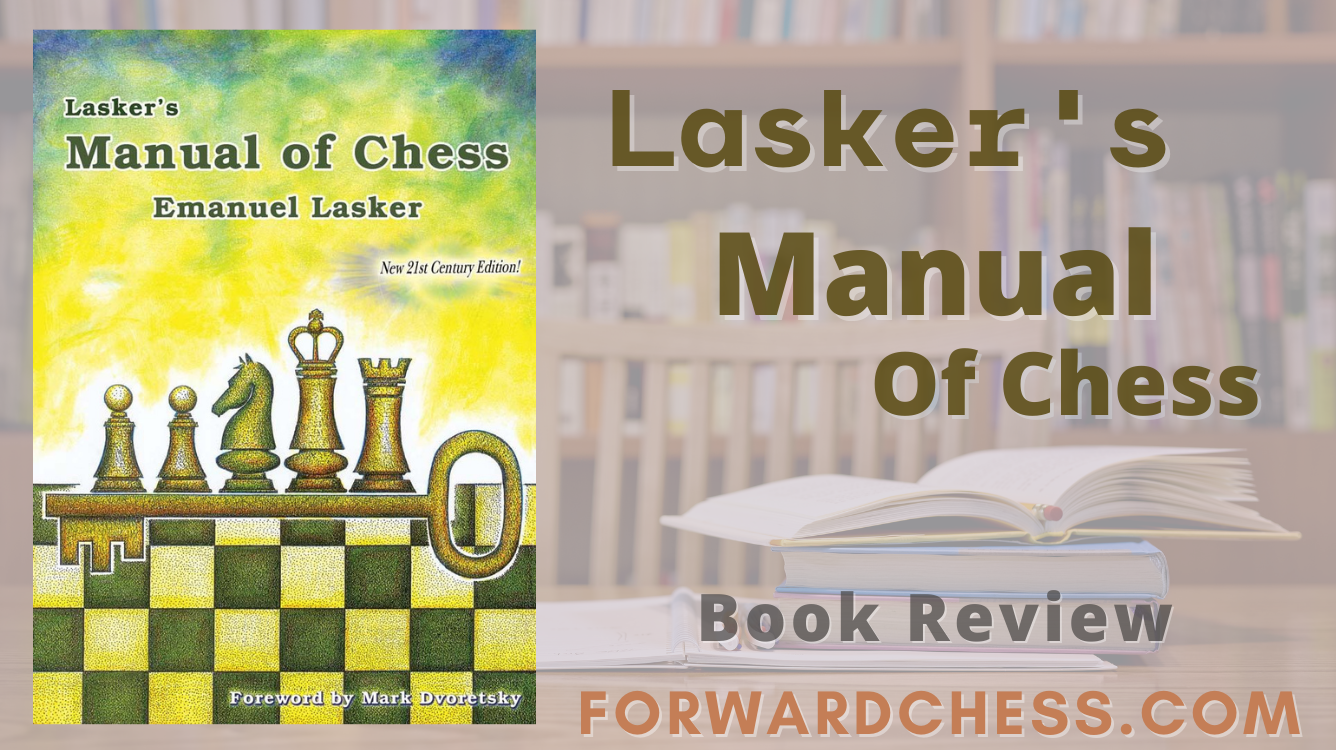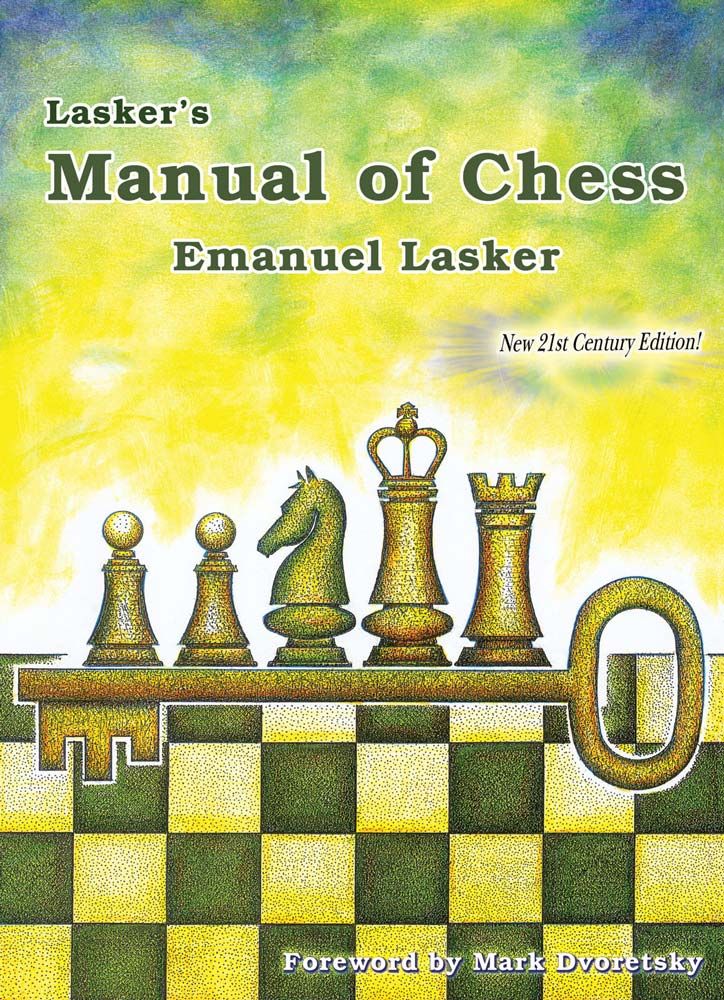Review: Lasker’s Manual of Chess
“Can studying the classics be helpful? That depends. Many books that were popular in their day have grown dated, and are now of interest only to lovers of chess history. But Lasker’s Manual of Chess, written by Emanuel Lasker, has not lost its relevance even now, some eighty years after it was first published.” – Mark Dvoretsky, in the Foreword to the book.
The late trainer Mark Dvoretsky wrote the above quote in 2008, when this revised edition of Lasker’s chess manual appeared. The original edition was published in 1932, and the editor, Taylor Kingston, has made some significant changes for this edition. In particular, the notation was converted to standard algebraic. Other welcome features include historical photos, interesting comments about Lasker’s life and personality, and editorial corrections to some of the analysis.
As the editor notes in his Preface, corrections are potentially a minefield when revising a classic book, whereby the original content can be overwhelmed by changes. In the current book, minor typographical errors and omissions are usually given in the text, while more substantial changes are noted with footnotes, and the details are given at the end of the book.
It’s perhaps inevitable that modern chess engines will pick up corrections in a book written around ninety years ago. The editor has listed around sixty such corrections. In some cases, these involve slips in analysis made by Lasker, while others introduce additional details and extensions to the original analysis. Overall, the treatment of the corrections in the book is not intrusive and adds value to the new edition.
The book starts with the rules of the game and so in principle could be used by complete beginners. However, the pace increases quickly and hence the book is more suitable for players who have some experience in chess. Lasker’s underlying theme is that chess is a struggle and a fight, and he stresses this aspect throughout the book.
Book I covers opening theory as it existed when the book was written. Of course, this means that many modern opening systems are not covered, and the treatment is mainly on classical openings. Despite this, there is much of interest here, as non-professional players can play the suggested systems to get a sound middlegame position. Moreover, some of the openings covered, such as the Italian Game and the Queen’s Gambit, are still very topical at the elite level. Lasker was not much taken by the new openings championed by the hypermodern school in his day, although there is some discussion of these openings. For example, he writes of the Réti Opening:
“A spiritual opening which possesses, it is true, not so, much force as variety, but which is exceedingly plastic and therefore susceptible of being turned into many wholly different shapes.”
Books III and IV cover combinations and planning and it’s these two parts that represent the most original parts of the book. After covering the play of the romantic school, with the “attack at all costs” credo, Lasker pays homage to his predecessor Steinitz who put chess theory on a sound basis. He praises Steinitz for his pioneering work:
“He was a profound thinker, he had a passion for thought, he felt and saw its power and he was not minded to stop at maxims of merely practical value… That Steinitz at the age of fifty-nine years was defeated by me and later also by others is due to no defect in his theory. His theory is and forever remains the classical expression of the idea of chess.”
Lasker covers what are now considered the standard combinational themes in book III using games and composed positions. Book IV provides an extensive review of Steinitz’s theory and Lasker’s corrections and additions to the theory. Of particular note here are the themes of attacking from a position of strength and the accumulation of small advantages. Both books provide a lot of material for study and assimilation.
Book V covers the aesthetic side of chess, and here Lasker also indulges in his passion of philosophy. Of course, some of his predictions on world affairs have not happening, but this doesn’t detract from the discussion. The last book illustrates the theory with some model games and examples.
Two examples from the book are given below, with annotations from the book.
In summary, it’s fitting to conclude this review by again quoting that exceptional trainer Mark Dvoretsky from his Foreword:
“Lasker was both a great fighter and a deep thinker. His book forms the quintessence of many years of exceptionally successful experience, and his thoughts on the same. It teaches you what he considers to be most important, general principles and methods applicable to any situation. Once you have read the Manual, you will become wiser, which is bound to help you later on, both in chess and in life.”
- New Release: Chess Analysis – Reloaded - March 9, 2024
- Review: The Art of The Endgame – Revised Edition - February 14, 2024
- Review: Study Chess with Matthew Sadler - December 13, 2023


